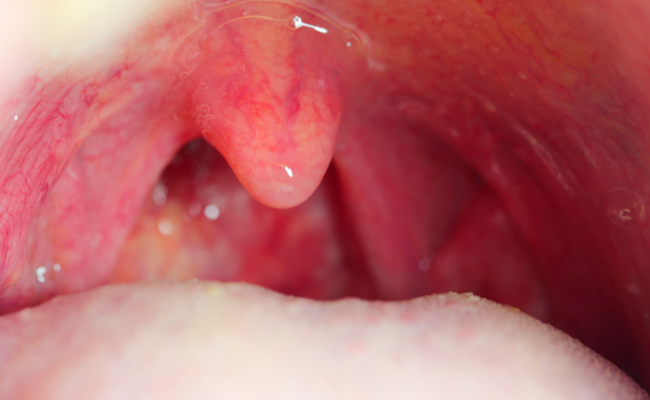What to do incase of Laryngeal Cancer?
- January 08, 2024
- No Comments
What is Laryngeal Cancer?
Laryngeal cancer, a malignancy that arises in the tissues of the larynx, commonly referred to as the voice box, poses a threat to the functions of speaking, breathing, and swallowing. This type of cancer originates when cells within the larynx undergo uncontrolled growth, resulting in the formation of a malignant tumor. As these cancerous cells multiply, they invade surrounding tissues, causing damage to the affected individual's overall well-being. Early detection and treatment are imperative in managing the impact on speech, respiration, and swallowing functions.
Why Does Laryngeal Cancer Occur?
The precise causation of laryngeal cancer remains elusive in many cases, yet certain identifiable risk factors shed light on the circumstances that elevate the likelihood of its development. Two primary contributors to laryngeal cancer are smoking and excessive alcohol consumption. Prolonged exposure to the carcinogens present in tobacco smoke and alcoholic beverages creates an environment conducive to cellular changes in the larynx, setting the stage for the emergence of cancerous growths. Additionally, age, gender (more prevalent in men), and a history of gastroesophageal reflux disease (GERD) contribute to the multifaceted risk profile associated with laryngeal cancer.
How is Laryngeal Cancer Diagnosed?
Diagnosing laryngeal cancer is a meticulous and comprehensive process that involves a strategic amalgamation of medical expertise and advanced diagnostic modalities.
- Medical History and Physical Examination: The journey commences with a detailed exploration of the patient's medical history, symptoms, and potential risk factors. A comprehensive physical examination, including a meticulous neck examination, provides valuable initial insights.
- Imaging Studies: Advanced imaging studies, including computed tomography (CT) scans, magnetic resonance imaging (MRI), and positron emission tomography (PET) scans, are deployed to visualize the larynx. These imaging modalities play a crucial role in delineating the extent of the cancer.
- Biopsy: A pivotal step involves obtaining a tissue sample, known as a biopsy, from the suspected tumor site within the larynx. Microscopic examination of this sample is the definitive means of confirming the presence of cancer cells and determining the type and stage of the cancer.
- Laryngoscopy: Laryngoscopy, facilitated by a thin, flexible tube equipped with a light and camera (endoscope), enables direct visualization of the larynx. This procedure not only allows for a closer inspection but also facilitates the biopsy of suspicious areas.
Treatment Solutions for Laryngeal Cancer:
The landscape of laryngeal cancer treatment is multifaceted, tailored to the specific characteristics of the tumor and the individual's overall health. The arsenal of treatment options includes:
- Surgery: Surgical intervention stands as a formidable weapon, with procedures ranging from the removal of the tumor (lumpectomy) to more extensive measures, such as partial or total laryngectomy. The choice of surgery depends on factors such as the size and stage of the cancer.
- Radiation Therapy: High-energy beams, directed with precision, form the essence of radiation therapy. This modality aims to obliterate cancer cells and may serve as the primary treatment or complement surgical interventions.
- Chemotherapy: Chemotherapy, deploying potent drugs to impede the growth of cancer cells, is a valuable ally in the battle against laryngeal cancer. It may be employed independently or in conjunction with surgery or radiation therapy, particularly for advanced-stage cancers.
- Immunotherapy: Immunotherapy represents a frontier in cancer treatment, harnessing the power of the body's immune system to target and eliminate cancer cells. While still under exploration in clinical trials for laryngeal cancer, it holds promise as a revolutionary treatment avenue.
- Voice Rehabilitation: Laryngectomy, involving the removal of part or all of the larynx, necessitates comprehensive voice rehabilitation. Speech therapy and the utilization of voice prostheses or other devices are integral components of this rehabilitative process, aiming to restore communication abilities.
Benefits of Early Detection and Treatment:
- Improved Survival Rates: Early detection serves as a beacon of hope, paving the way for timely intervention and significantly enhancing treatment outcomes. Improved survival rates become attainable through swift and targeted therapeutic measures.
- Preservation of Voice: The early stages of laryngeal cancer offer a window of opportunity to preserve the patient's ability to speak. Surgical techniques and rehabilitative therapies, when implemented promptly, contribute to maintaining a functional and expressive voice.
- Reduced Treatment Intensity: Detecting laryngeal cancer in its nascent stages often enables less aggressive treatment approaches. This, in turn, reduces the necessity for extensive surgical procedures or intense chemotherapy, mitigating the overall impact on the patient.
- Enhanced Treatment Response: The responsiveness of early-stage laryngeal cancer to treatment interventions, be it surgery, radiation, or chemotherapy, is notably heightened. This increased efficacy translates into a higher probability of successfully eradicating the cancer.
- Improved Quality of Life: Timely treatment not only addresses the cancer itself but also contributes to the effective management of symptoms. This comprehensive approach minimizes potential complications, culminating in an enhanced overall quality of life for individuals grappling with laryngeal cancer.











Comments (0)
No comments yet